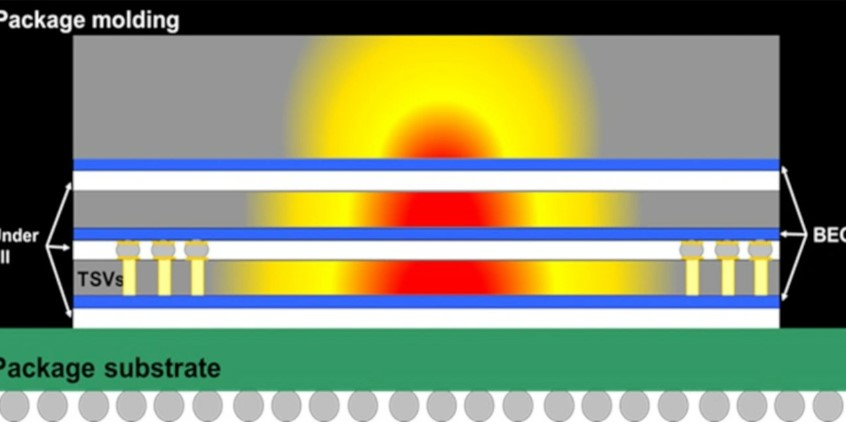As the industry demands more transistor density, more bandwidth, and lower power consumption, many IC design and packaging teams are digging into how to add vertically stacked multiple die dies and chiplets. This technology, known as 3D-IC, is expected to deliver many advantages over traditional single-die designs in flat design.
Three-dimensional integrated circuits (3D-IC), as one of the key technologies of the next generation of electronic products, are gradually moving from theory to practice. However, 3D-IC design is not an easy road, it faces many challenges, but also breeds great potential and demand.
Challenges of 3D-IC design
1. Thermal management challenges
The vertically stacked structure of 3D-ICs significantly improves integration, but also presents unprecedented thermal management challenges. As the number of chip layers increases, heat accumulates rapidly in a limited space, creating a significant thermal gradient. This not only affects the performance and stability of the chip, but can also cause serious problems such as thermally induced warpage and thermal runaway. Therefore, how to effectively manage and dissipate heat while ensuring high performance has become the primary problem that must be solved in 3D-IC design.
2. Process complexity
The manufacturing of 3D-IC involves the integration of a variety of advanced process technologies, such as through-silicon via (TSV) technology, wafer bonding technology, etc. These technologies not only require extremely high process accuracy and stability, but also need to address issues such as compatibility between different materials and differences in coefficients of thermal expansion. In addition, as process nodes continue to shrink, the difficulty of process control is also increasing, which puts forward higher requirements for manufacturing equipment and process flow.
3. Innovate the design process
The traditional 2D integrated circuit design process can no longer meet the needs of 3D-IC design. 3D-IC design requires a more comprehensive consideration of the interactions and influences between thermal, electrical, and mechanical multiphysics. Therefore, the design process must be innovated and refactored to realize the application of advanced design methods such as multiphysics simulation and global perspective optimization. At the same time, collaboration and communication between design teams need to be strengthened to ensure the accuracy and consistency of design data.

Figure: Challenges and future prospects of 3D-IC design
The future of 3D-IC design
1. Balance between high performance and low power consumption
With the rapid development of big data, artificial intelligence and other technologies, the demand for computing power is increasing day by day. With its unique structural advantages, 3D-ICs provide the possibility to realize high-performance computing. However, high performance is often accompanied by high power consumption and high heat generation. Therefore, how to reduce power consumption and heat generation while ensuring high performance will be one of the important directions of 3D-IC design. By optimizing the circuit structure and adopting advanced packaging technology, it is expected to achieve a balance between high performance and low power consumption.
2. The pursuit of high reliability and long life
In automotive electronics, aerospace and other applications, the reliability and life of chips are extremely high. As one of the core components of future electronic products, the reliability and life of 3D-IC directly affect the stability and safety of the entire system. Therefore, the reliability factor must be fully considered in the 3D-IC design, and the redundant design and fault tolerance mechanism must be used to improve the reliability and life of the chip.
3. Cross-sector cooperation and technological innovation
3D-IC design involves knowledge and technology in various fields such as material science, manufacturing process, and circuit design. In order to promote the development and application of 3D-IC technology, it is necessary to strengthen cross-field cooperation and exchanges to jointly solve technical problems and bottlenecks. At the same time, it is also necessary to encourage technological innovation and R&D investment, and promote the continuous emergence and application of new technologies, new processes and new materials.
3D-ICs are a major emerging trend in the semiconductor industry, demonstrating compelling power, performance, and form factor advantages in many application areas and helping to curb the rising cost of SoC development. While design flow challenges are being addressed, there is still a lot of work to be done to attract mainstream users to mass production on 3D-IC processes.






